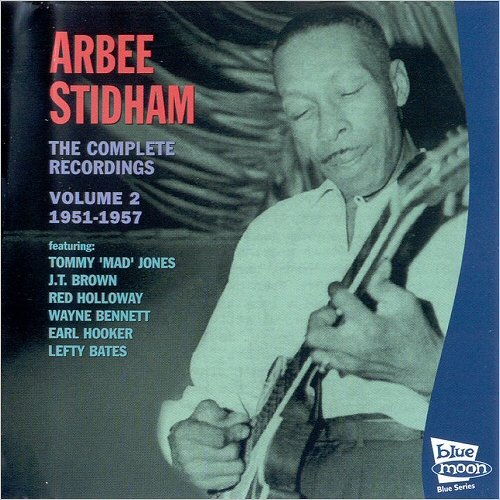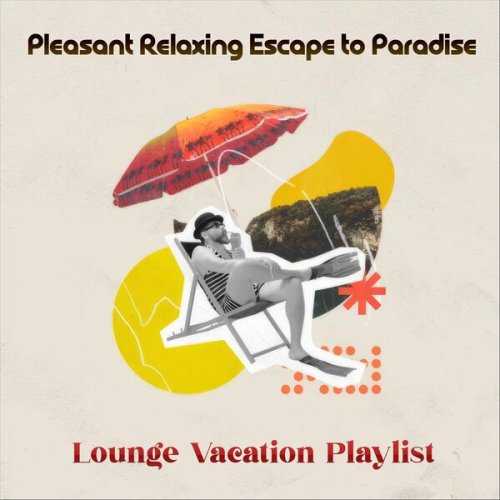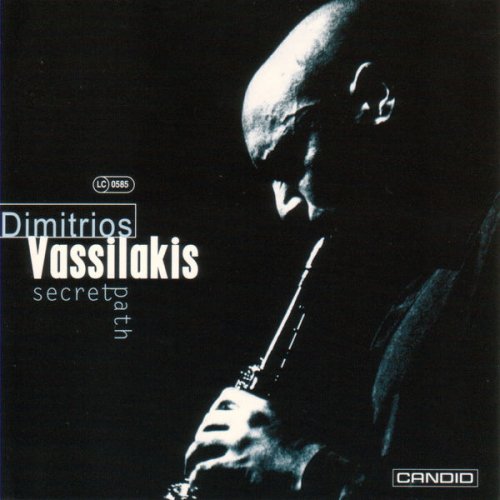Todd Rundgren - A Cappella + Nearly Human + 2nd Wind (2011)
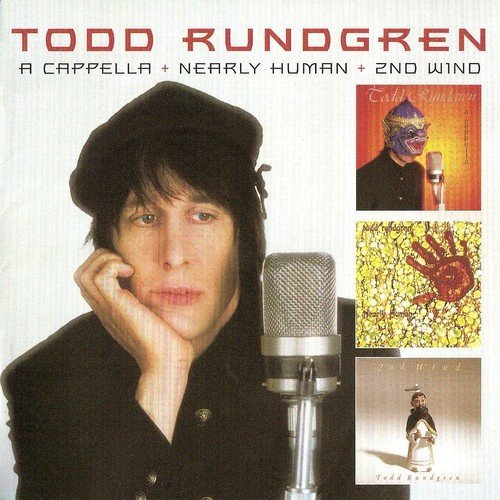
Artist: Todd Rundgren
Title: A Cappella + Nearly Human + 2nd Wind
Year Of Release: 2011
Label: Edsel / Rhino
Genre: Classic Rock, Prog Rock, Soft Rock
Quality: Flac (tracks, .cue, log)
Total Time: 01:18:08 + 01:15:46
Total Size: 389 Mb / 1 Gb (scans)
WebSite: Album Preview
Title: A Cappella + Nearly Human + 2nd Wind
Year Of Release: 2011
Label: Edsel / Rhino
Genre: Classic Rock, Prog Rock, Soft Rock
Quality: Flac (tracks, .cue, log)
Total Time: 01:18:08 + 01:15:46
Total Size: 389 Mb / 1 Gb (scans)
WebSite: Album Preview
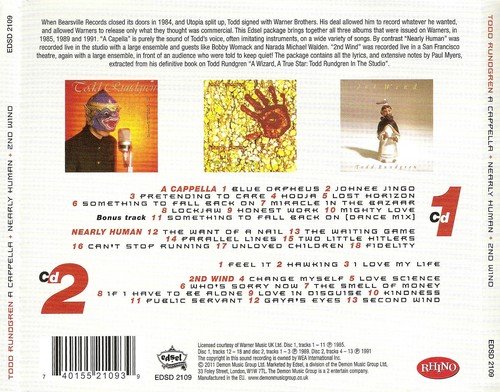
Tracklist:
CD1
A Cappella:
01 Blue Orpheus - 5:04
02 Johnee Jingo - 3:54
03 Pretending to Care - 3:45
04 Hodja - 3:24
05 Lost Horizon - 5:00
06 Something to Fall Back On - 4:16
07 Miracle in the Bazaar - 4:14
08 Lockjaw - 4:01
09 Honest Work - 2:43
10 Mighty Love - 3:42
11 Something to Fall Back On (Dance Mix) - 6:15
Nearly Human:
12 The Want of a Nail - 5:15
13 The Waiting Game - 4:17
14 Parallel Lines - 4:24
15 Two Little Hitlers - 4:00
16 Can't Stop Running - 5:05
17 Unloved Children - 4:06
18 Fidelity - 4:40
CD2
01 Feel It - 5:44
02 Hawking - 7:01
03 I Love My Life - 8:57
2nd Wind:
04 Change Myself - 5:23
05 Love Science - 5:25
06 Who's Sorry Now - 6:17
07 The Smell of Money - 4:07
08 If I Have to Be Alone - 3:52
09 Love in Disguise - 4:04
10 Kindness - 5:32
11 Public Servant - 5:40
12 Gaya's Eyes - 6:14
13 Second Wind - 7:33
Todd Rundgren‘s last three albums for Bearsville are rounded up on this double-disc set: the experimental A Cappella, the slick soul of Nearly Human, and the live-in-studio 2nd Wind. Apart from a dance mix of A Cappellas’ “Something to Fall Back On,” there are no bonus tracks, only new notes from Rundgren expert Paul Myers, and the audio is remastered, making this as an appealing package. Todd Rundgren’s best-known songs — the Carole King pastiche “I Saw the Light,” the ballads “Hello, It’s Me” and “Can We Still Be Friends,” and the goofy novelty “Bang on the Drum All Day” — suggest that he is a talented pop craftsman, but nothing more than that. On one level, that perception is true since he is undoubtedly a gifted pop songwriter, but at his core, Rundgren is a rock & roll maverick. Once he had a taste of success with his 1972 masterwork Something/Anything?, Rundgren chose to abandon stardom and, with it, conventional pop music. He began a course through uncharted musical territory, becoming a pioneer not only in electronic music and prog rock, but in music video, computer software, and Internet music delivery as well. As his career wound into its third decade, Rundgren concentrated on behind-the-scenes innovations, but during the ’70s and ’80s he maintained a relentless work schedule. He released up to two albums a year either as a solo artist or with his band Utopia, while producing acclaimed, successful records for artists as diverse as Badfinger, Meat Loaf, Grand Funk Railroad, the New York Dolls, and XTC. Given such an extensive catalog, it’s not surprising that there’s a vast variety of styles within Rundgren’s music — which is either rewarding or frustrating, depending on the album. Also, more often than not, the singles from each record do not offer an accurate indication of what the remainder of the album sounds like. Such an approach severely curtailed his mass appeal, but it helped him cultivate a ferociously dedicated cult audience.
During the ’70s, his records were underground favorites, and his albums continued to chart until 1991, nearly 20 years after his commercial peak. In those 20 years, Rundgren may have existed largely on the fringes of pop music, but he produced a body of work that ranks as one of the most intriguing in rock & roll. A native of Upper Darby, Pennsylvania — a suburb of Philadelphia — Rundgren learned how to play guitar as a child, teaching himself after his initial round of lessons ceased. As a teenager, he absorbed pop music from Motown to Liverpool and formed Money, his first band, when he was 16. Following his high-school graduation, he moved to the resort town of Wildwood, NJ, where he regularly sat in with a number of bands. Eventually, he became a member of the blues group Woody’s Truck Stop, which soon became based in Philadelphia.
During the ’70s, his records were underground favorites, and his albums continued to chart until 1991, nearly 20 years after his commercial peak. In those 20 years, Rundgren may have existed largely on the fringes of pop music, but he produced a body of work that ranks as one of the most intriguing in rock & roll. A native of Upper Darby, Pennsylvania — a suburb of Philadelphia — Rundgren learned how to play guitar as a child, teaching himself after his initial round of lessons ceased. As a teenager, he absorbed pop music from Motown to Liverpool and formed Money, his first band, when he was 16. Following his high-school graduation, he moved to the resort town of Wildwood, NJ, where he regularly sat in with a number of bands. Eventually, he became a member of the blues group Woody’s Truck Stop, which soon became based in Philadelphia.
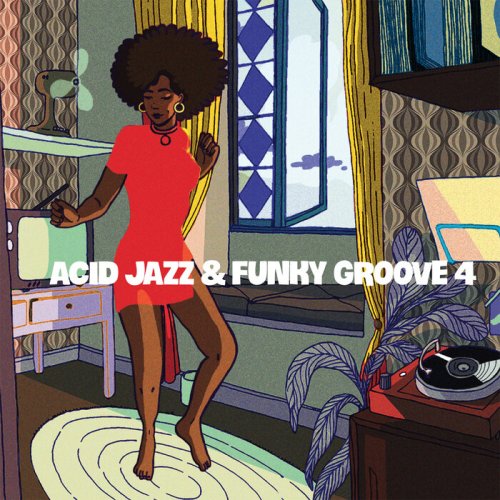
![Jamie Finlay - Sun Dogs (2024) [Hi-Res] Jamie Finlay - Sun Dogs (2024) [Hi-Res]](https://www.dibpic.com/uploads/posts/2024-06/1718263492_g64ccqddmz4tc_600.jpg)
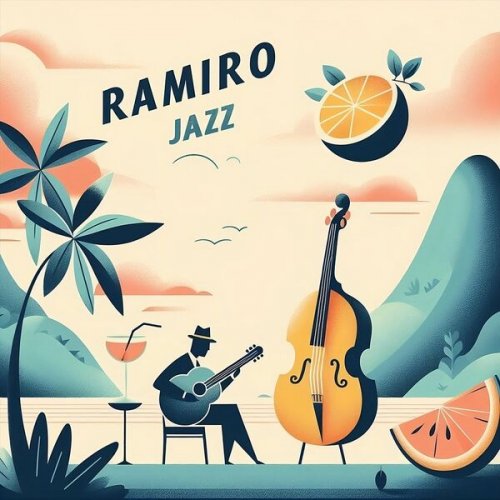
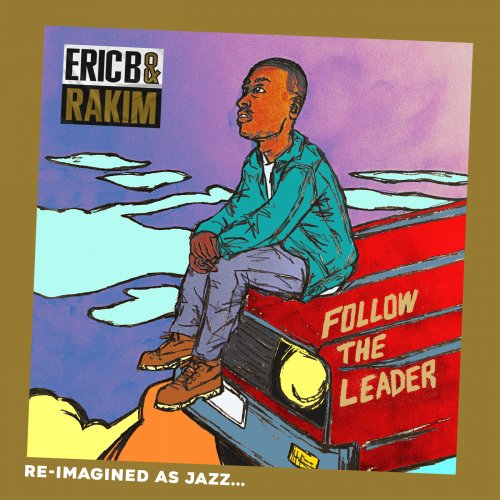
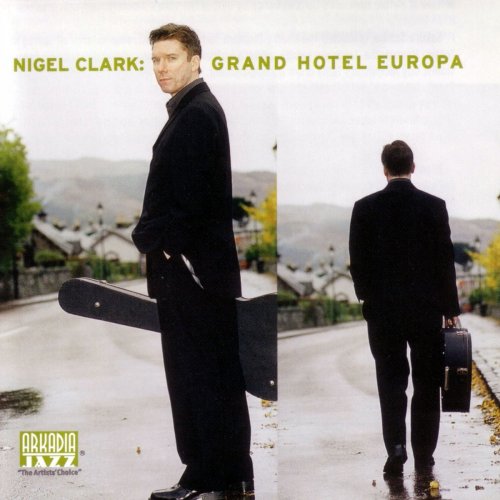
![Sleazy Grease - ...Thanks, Appreciate it (2024) [Hi-Res] Sleazy Grease - ...Thanks, Appreciate it (2024) [Hi-Res]](https://www.dibpic.com/uploads/posts/2024-06/1718433086_iobeyj7zu7zea_600.jpg)
